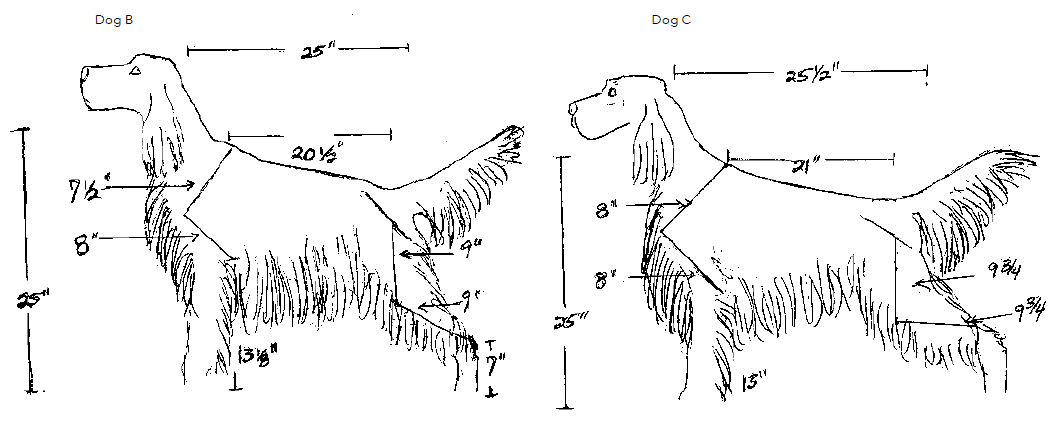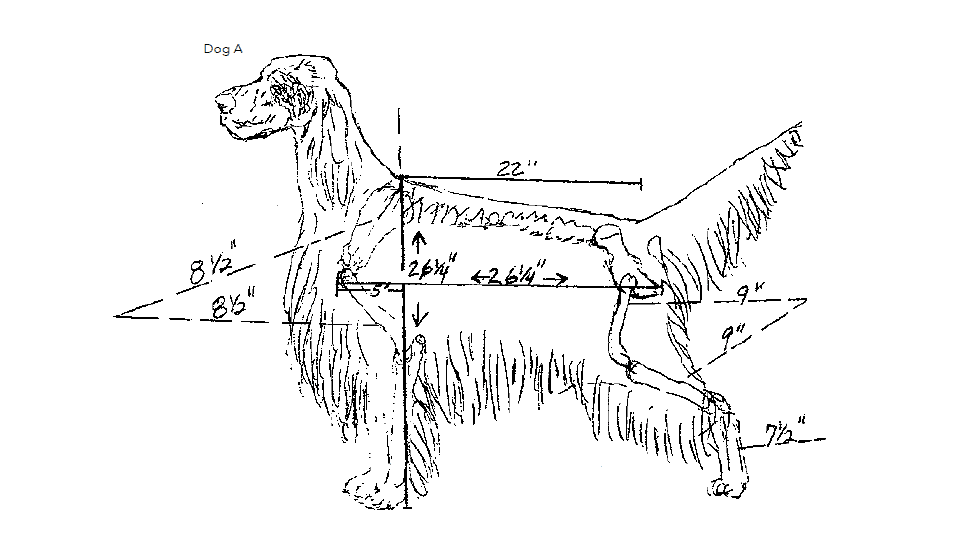This article was originally published in Showsight Magazine, January 2019 issue.
Judging the English Setter
The English Setter is an upland bird hunting dog. Although they originated in England, they became popular in the U.S. as an important hunting dog in the South and later a competition field trial dog. In addition, there were dogs imported to be shown as well.
The English Setter has been a great upland bird dog originating in England. It is extremely important when judging this breed that we remember they were bred to be a hunting dog and they should retain these qualities.
The word Setters comes from the word Set. English Setters were bred to ‘set’ birds. To ‘set’ means to crouch down on point (pointing at a bird). Consequently, structure is important not only for endurance but also for crouching down for long periods of time. A dog often will stand on point for twenty minutes while the hunter works their way up to flush the bird that is being pointed.
The balance of a pointing/hunting dog is of utmost importance as they must cover vast terrain in pursuit of game (birds). Balance in structure helps reduce fatigue and breakdown of joints and muscles. Often you will see a less angulated dog be quicker for short periods of time, but not be able to outlast the endurance of a dog with proper angulations and balance. Correct balance and angulations create effortless movement. In addition, you will gain much more effective movement with correct muscling.
It is important that they have good rib spring to be able to breathe, as a great hunting dog may hunt for eight hours a day for weeks at a time. Their movement should be easy, effortless not heavy or pounding. With no hacking, sickle-hocks, over reaching or rolling as all of these things will break down the body rapidly and cause injuries, aches and pains.
The toes tight, arched and not flat. If their toes are flat, they are at risk of sores and injuries.
Type is pertinent for this breed. English Setters are a moderate gun dog, smaller than the Irish and Gordon Setters. They are of good bone and size without being slight, weedy or massive.
Head planes should be level, the muzzle and skull should have a brick-like appearance. Flews should be square, not pendulous. A must in this breed is the soft sweet expression in the eyes and face with no harshness.

Dog A—Represents the greatest balance of the three dogs. Not only are the length of the bones important but where they are seated on the vertebrae.
As a straight scapula or upper arm will cause the dog to be off balance and make extra effort and motion that is not only unnecessary but will cause the body to break down quickly.
This dog is not only the most balanced in bone length, but also in length of body to height. Average measurements: 26¼” x 26½”.
Length of back is extremely important as well, as a setter can not reach and drive properly with a back that is too short or with a back that is too long and dipping or reaching.
Dog B—Uses himself beautifully moving unless he moved too fast. If he moved too fast, the length of his stifle would over reach his front foot. In addition he was less angulated in the front assembly than Dog A. Because dog B is more angulated in the rear than the front, the slightly extra length in body help to prevent him from over reaching the majority of the time. With his back being slightly shorter it gave him strength to carry the overall extra ½ inch of length in his body.
Dog C—Is balanced in length to height but he has a shorter scapula which restricted him to having as free and easy of a side gait.
When judging the English Setter, you can measure the length of bone but it wouldn’t be necessary as you should be able to tell what their balance is like when you watch them go around the ring.
Although coming and going movement is important it doesn’t override correct side gait balance. You can have a dog that is perfect coming and going slowly, but isn’t balanced at all on the side or doesn’t exhibit good reach and drive.
An interesting observation that I have made is a Setter that is set extremely close in the shoulder often has trouble setting (pointing, crouching) low to the ground. I by no matters am advocating wide shoulders. However, I do believe the two finger width might be too close together. Of course much of that depends on the layer of the scapula onto the spine and the muscles.
Muscles carry a big factor in this creation. They hold the bones in and help carry the dog across the ground. Muscles take all tension off the bones and help the dog move with ease.
Hocks need to be stable without wobbling. If they wobble, the dog will break down after hunting for a long period of time. Shorter hocks give balance and drive than long hocks do.
Tails should come off the back with a slightly sloping croup to almost level. Often if the crop gets too level then the tail is carried higher. The tail should be carried straight off of the back, not elevated above the topline.
As a whole, an English Setter should be slightly smaller than the Irish and Gordon Setters. Balanced both front to rear and height to length as well as scapula to upper arm and upper thigh to lower thigh. Hocks should be short and solid without wobbling when moving. When moving, the dog should look so smooth that you could imagine putting a glass of wine on their back and not fall.










